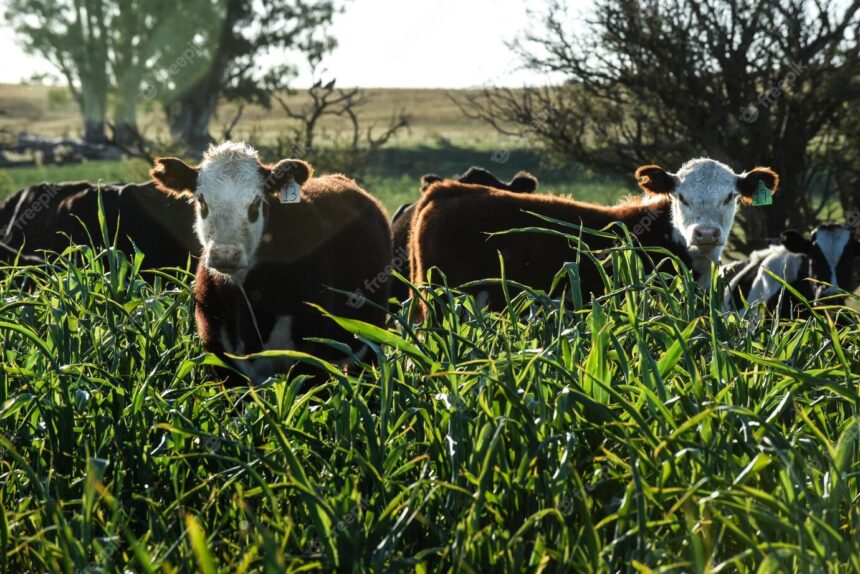Forage and pastures play a crucial role in sustaining livestock agriculture in South Africa. Livestock production, including beef, dairy, sheep, and goat farming, heavily relies on the availability of nutritious forage and well-managed pastures. Here are some key points highlighting the significance of forage and pastures in South African livestock agriculture:
- Nutritional Value: Forage and pastures serve as essential sources of nutrition for livestock. They provide the required proteins, carbohydrates, fats, vitamins, and minerals necessary for animal growth, reproduction, and overall health. The diversity of South Africa’s climate and landscapes allows for the cultivation of various forage species, including grasses, legumes, and browse plants, catering to different livestock requirements.
- Extensive Grazing Systems: South Africa has vast areas of natural grazing land, which supports extensive livestock farming systems. Livestock, such as cattle and sheep, are allowed to graze freely on open rangelands, where they consume native grasses and browse. These grazing systems are cost-effective, as they minimize the need for supplementary feeding and allow animals to utilize natural resources efficiently.
- Improved Productivity: Well-managed pastures and forage systems contribute to improved livestock productivity. Sustainable grazing practices, such as rotational grazing, help maintain pasture health and prevent overgrazing. Rotational grazing involves dividing pastures into smaller paddocks and moving livestock from one paddock to another, allowing sufficient time for the vegetation to recover. This practice optimizes forage utilization, enhances animal performance, and increases the carrying capacity of the land.
- Drought Resilience: South Africa is prone to periodic droughts, which can severely impact livestock production. However, a well-maintained pasture and forage system can enhance the resilience of livestock farming during drought conditions. Drought-tolerant forage species, such as certain types of grasses and legumes, can survive with minimal rainfall and provide feed when other resources are scarce. Additionally, implementing water management strategies, such as installing watering points and efficient irrigation systems, can help sustain forage production during dry spells.
- Soil Conservation and Erosion Control: Forage and pasture systems also play a vital role in soil conservation and erosion control. The extensive root systems of perennial forage plants help stabilize the soil, preventing erosion and promoting water infiltration. Maintaining ground cover through well-managed pastures reduces the risk of soil erosion caused by wind and water, preserving the fertility of agricultural land.
- Biodiversity and Environmental Benefits: Forage and pasture systems contribute to biodiversity conservation and environmental sustainability. By promoting a diverse range of grasses, legumes, and browse plants, these systems provide habitats for various plant and animal species. Proper management practices, such as avoiding overgrazing and implementing conservation measures, help preserve natural ecosystems and prevent habitat degradation.
In conclusion, forage and pastures are integral to sustaining livestock agriculture in South Africa. They provide essential nutrition, support extensive grazing systems, improve productivity, enhance drought resilience, conserve soil, and offer environmental benefits. Investing in the management and development of forage and pasture resources is crucial for the long-term viability and sustainability of the livestock industry in the country.
Join 'Farmers Mag' WhatsApp Channel
Get the latest Farming news and tips delivered straight to your WhatsApp
CLICK HERE TO JOIN






